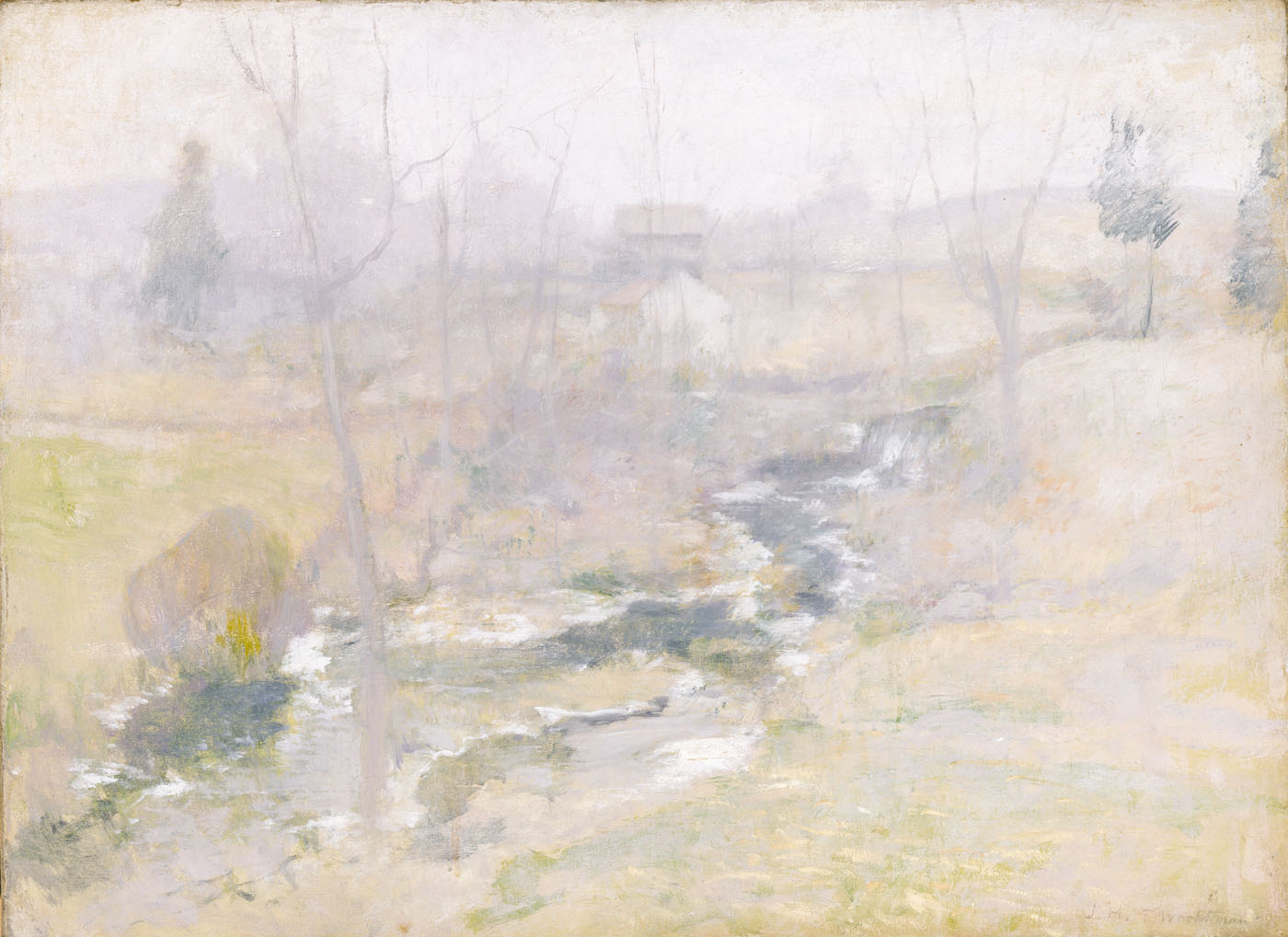End of Winter

Twachtman drew inspiration from his seventeen acres of land in Greenwich, Connecticut, and his paintings of the property express the emotional and spiritual comfort he found there. This image describes the beginning of the seasonal transition from winter to spring. Twachtman depicted bare trees and an icy, swollen brook, but allowed the brown primed canvas to show through his thinly applied paint so that a feeling of warmth and regeneration could emerge. Twachtman created many images of streams and brooks, and these ceaselessly moving bodies of water might have held a deeper significance for him. By the time Twachtman painted his Connecticut landscapes, American artists and intellectuals had been interested in Buddhism for more than two decades, and the artist himself had studied Zen philosophy and Japanese art. (Pyne, "John Twachtman and the Therapeutic Landscape," in Chotner et al., John Twachtman: Connecticut Landscapes, 1989) This may account for the meditative quality of his pictures, the sense of looking not at an actual landscape, but at an inward image of something seen long before
- 19
- Other objects by this creator in this institution
- 12
- Objects by this creator in other institutions